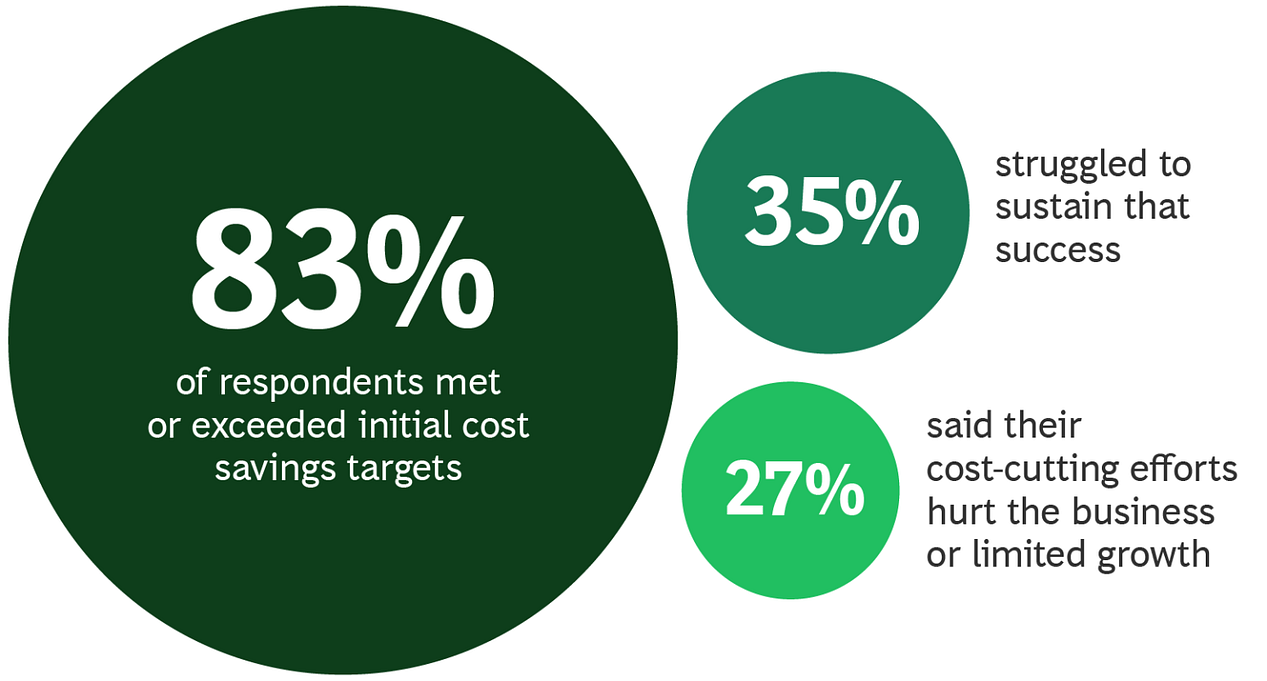health transformation
.foundation – (HTF)
Joaquim Cardoso MSc
February 2024
What is the message
Despite recent economic uncertainties and geopolitical tensions, corporate leaders are cautiously optimistic about the future. They are relieved by improved market conditions and increased visibility for long-term capital investments. However, they remain mindful of potential risks such as upcoming elections and ongoing conflicts.
Furthermore, the emergence of disruptive technologies like generative AI and the necessity to adapt operations for the future underscore the importance of cost management, which continues to be a top priority for CEOs. This focus on reducing costs is seen as the primary strategy for improving performance in 2024, with efforts aimed at growth and expansion following closely behind.
The survey reveals that companies are implementing cost management programs across various sectors, with a particular emphasis on manufacturing, supply chains, labor, non-labor overhead, and marketing and sales. However, challenges persist, especially in attracting and retaining specialized talent in a competitive labor market.
To address these challenges effectively, leaders are advised to take a holistic approach to cost management, emphasizing continuous improvement, innovation, and employee engagement. By unlocking resources through quick wins and reinvesting in areas that drive growth, such as digital transformation, talent advancement, and operational excellence, companies can sustain competitive advantage in the long term.
This is an Executive Summary of the article “What Leaders Are Saying About Costs and Growth”, published by BCG on February 2024

BCG
February 2024
After a year of worrying about inflation, market conditions, and the possibility of a recession, corporate leaders seem to be breathing a collective sigh of relief.
In a new BCG survey of more than 600 C-suite executives from around the And an even larger proportion, 68%, believe they have enough visibility to make decisions about long-term capital investments.
These positive sentiments-along with an increase of available capital, certain regulatory changes, and other trends-could cause mergers and acquisitions to pick up in the coming months.
But leaders’ optimism is tempered with caution, for now. Economic and financial concerns are lingering. The outcomes of upcoming general elections in India, the US, and the EU could have business-related repercussions, as could ongoing conflicts in Ukraine and the Middle East.
And with the emergence of disruptive technologies such as generative AI and the need to reshape operations for the future, cost management remains at the top of the CEO agenda.
And with the emergence of disruptive technologies such as generative AI and the need to reshape operations for the future, cost management remains at the top of the CEO agenda.
In fact, the focus on reducing costs is the number one priority for companies seeking to improve performance in 2024, followed by efforts aimed at growth and geographic expansion.
Leaders are launching programs to manage costs throughout their businesses, but the survey reveals which areas they feel are “very important” for maintaining a competitive advantage:
- 65% say cost programs in manufacturing and supply chains are high priorities
- 52% point to labor and nonlabor overhead
- 45% name marketing and sales
And many are finding success with their efforts-at least in the beginning. While a high percentage report early wins, many say those costs eventually trickle back.
Cost challenges are exacerbated by the difficulty of finding specialized talent in a tight labor market. Attracting and retaining people with the right skills is the biggest concern among leaders in health care as well as technology, media, and telecommunications.
A Holistic Approach to Cost Management
We know from years of client engagements that cost transformations are difficult, and many don’t stick. Leaders improve the likelihood of success if they take a holistic approach that goes beyond one-and-done cost cuts and establishes a culture of continuous improvement-one that emphasizes innovation and treats setbacks as learning opportunities.
Executives need to focus on:
- Enablement, providing other leaders with the resources they need to make the best decisions and balance cost and growth ambitions
- Execution, carrying out strategic priorities that have been distilled into distinct actions
- Engagement among employees, who are in the know about the company’s priorities and vision and feel they are part of the solution
Companies can unlock resources through the quick wins they achieve and reinvest in areas that drive growth, such as digital and AI, talent advancement, modernized supply chains, and operational excellence.
Cost savings will be an important investment tool as leaders look for ways to fuel the strategic priorities that will create competitive advantage for the long term.
Originally published at https://www.linkedin.com.













